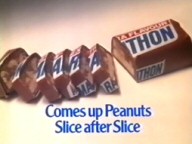The Past In Your Pocket
ARTICLE UPDATED IN MAY 2008
If you remember when Snickers was called Marathon, when Twix was called Raider or when Coca-Cola became New Coke, then you're probably old enough to remember some or all of the computers and consoles described below.
You may also like to know that you can emulate all of the systems below on your Symbian S60 3rd Edition phone, so you can enjoy your own golden age of gaming and computing whenever the urge to travel back in time strikes you.
Home Computer Emulators
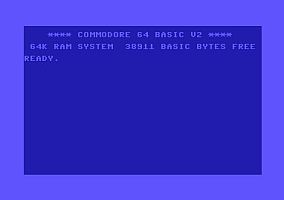 Commodore 64
Commodore 64
Released in 1982, the C64 became the best-selling 8-bit computer ever. It was a worldwide hit, especially in Europe where it became the number one games system throughout the 1980s (Europe wasn't into consoles until the 1990s). C64 software releases totalled over 10,000 titles.
Frodo is a C64 emulator for S60 and S80 devices. Frodo for S60 3rd Edition has now been released after spending a long time in development, so head on over and get your copy today. You can also download the finished versions of Frodo for S60 1st and 2nd Edition, and S80 (Nokia 9210, 9300 and 9500) from the same website. The author's favourite C64 games are M.U.L.E., Decathlon and Rally Speedway.
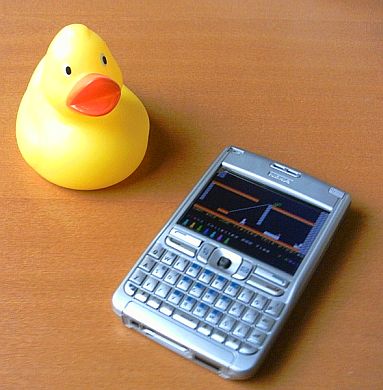 MSX
MSX
Launched in 1983, MSX (which stood for many different things depending on who you asked) was designed to provide a unified standard for 8-bit home computers, in much the same way that the IBM PC unified the standard for 16-bit computers. MSX had backing from many major electronics companies including Sony, Toshiba and Philips, and was a huge hit in Japan where most of its backing companies were based. Unfortunately it never really took off in the other major markets, Europe and America, partly because these markets had already become dominated by non-MSX computers such as the Commodore 64 and Sinclair Spectrum by the time MSX launched there.
The MSX software scene is understandably dominated by Japanese releases, but boy are they famous releases: many major game franchises such as Metal Gear, Bomberman, Wizardry, Ys and Dragon Quest all started out as MSX games.
fMSX is an MSX emulator for S60 devices. The website includes versions of fMSX for virtually every S60 model, S60 3rd Edition as well as 1st and 2nd Editions (including a special version for the N90). Getting fMSX to work is something of a pain as the MSX system files must be loaded in separately, or added by the end user to a SIS file on their PC using a separate set of tools and Windows notepad. However, as most MSX games are Japanese, the end user is more likely to be a hardcore gamer who puts up with these kinds of inconveniences.
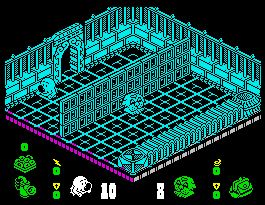 Sinclair ZX Spectrum
Sinclair ZX Spectrum
A particular favourite with this reviewer, and the number one 8-bit home computer in the UK, the Sinclair ZX Spectrum (or Speccy) was launched in 1982 and became an instant success in its home country. It sold for half the price of its nearest rival, the C64, and came out just as the British home computer market was booming. It was the right machine at the right time, and spawned an enormous third party software market, much of which still exists today in the form of British game companies such as Rare and Code Masters.
There were about 10,000 game releases for the Spectrum during its lifetime.
Speccy is an S60 3rd Edition and UIQ3 emulator of the Sinclair ZX Spectrum. It's now come out of Beta so it's no longer free, but there's a free trial, and there are additional hints on how to install and run Speccy on your phone on a special S60 page. Feedback about Speccy should be left at a dedicated Google Group, and the developer really does take notice of it so don't hesitate to let them know how it runs on your S60 device.
(For those who don't have 3rd Edition devices, Spectrian is an excellent S60 1st and 2nd Edition-compatible Spectrum emulator, and there's a UIQ version too. Spectrian is a very polished commercial product, it's a shame there's no 3rd Edition version available yet.)
Amstrad CPC
The Amstrad CPC was a British home computer range which came rather late to the 8-bit party in 1984, two years after its main rivals the C64 and ZX Spectrum. While it never quite caught up with the C64 or Speccy in its home territory, it did still do rather well and it was standard practice for 8-bit computer games to be released on C64, Spectrum and CPC. Just like the C64 and Speccy, there were many magazines and books devoted to using Amstrad computers.
S60-CPC is a CPC emulator for S60 3rd Edition devices, which you can download for free from its official site. However, it's still very much in the early stages so you shouldn't expect it to work perfectly.
Games Console Emulators
ColecoVision
Launched in America in 1982, the ColecoVision console was intended to compete with the hugely successful Atari 2600. ColecoVision used the latest technology and had far superior graphics to the 2600, allowing it to run arcade game conversions that were much closer to the originals. Unfortunately the timing of the ColecoVision's launch was very poor, the American console market collapsed in 1983/1984 (probably due to a surplus of low quality games that flooded the market) and ColecoVision vanished along with most other US consoles of the period. There were about 140 games released for the ColecoVision during its lifetime.
ColEm is a S60 3rd Edition and UIQ3 emulator of the ColecoVision, and is available for free. Any feedback about ColEm should be posted to the author's Google Group, and is much appreciated. As with Speccy, you can get further instructions for how to install it on your S60 device on a specially written S60 page.
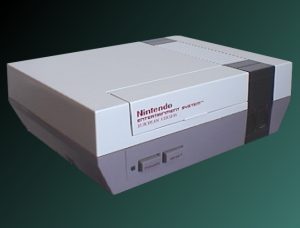 Nintendo NES
Nintendo NES
The Nintendo NES was originally called the Famicom in its native Japan (Famicom was a typical Japanese/English abbreviation, it stood for Family Computer), where it launched in 1983. It was a great success there, and was released in America as the NES (Nintendo Entertainment System) in 1985. Its launch occurred in the aftermath of the disastrous American Console Crash which had virtually wiped out the US games console industry a couple of years earlier.
Nintendo somehow managed to turn things round for the American console market and soon became a household name in the USA. It didn't do as well in Europe though, as consoles were still unpopular there because most European gamers preferred using home computers such as the C64. There were over 600 NES games released in the US and Europe, and more in its native Japan. Production of the Famicom continued in Japan until 1999, believe it or not.
vNES is a NES emulator available for S60 3rd Edition (there's also a version for 1st and 2nd Editions too, and a J2ME version for non-Symbian phones). You can download it and get more information about it from the vNES website. It's free to try, but you have to pay for the full version.
iNES is an another NES emulator for S60 3rd Edition and UIQ3. You can download a demo and purchase the full version from the official website.
Nintendo SNES
Intended to build upon the huge success of the NES/Famicom, the SNES (known as the Super Famicom in Japan) was a 16-bit cartridge-based games console launched in 1990 in Japan, 1991 in America and 1992 in Europe. It sold well but faced unprecedented competition from the Sega Mega Drive (known as the Genesis in America) and its hit game Sonic The Hedgehog.
Perhaps the most famous legacy of the SNES was the game Super Mario Kart, which was originally designed to show off the SNES's Mode 7 technology that allowed two dimensional games to appear three dimensional. The SNES had over 500 games released for it in the US and Europe.
vSun is a SNES emulator for S60 1st, 2nd and 3rd Editions (make sure you download the "S60v3" file if you want the 3rd Edition version). One of its chief features is support for multiplayer games through bluetooth, so you can have several people taking part in the same emulated game on several different phones at once. However, due to the complexity of emulating the SNES hardware, the games can run rather slowly on 1st and 2nd Edition S60s, so it's probably worth going for the 3rd Edition version if you can. There's also a version called vSun Plus which is faster than vSun but does not emulate sound, and is compatible with fewer games.
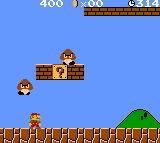 Nintendo Game Boy / Game Boy Color
Nintendo Game Boy / Game Boy Color
Invented by Gunpei Yokoi, the brains behind the Game & Watch series, the 8-bit monochrome-screened Game Boy created an entirely new class of product: the portable console. Along with Sony's Walkman, the Nintendo Game Boy laid the foundations for handheld devices in general, as consumer electronics had previously been considered something restricted to the home and car.
The Game Boy was also notable for proving that raw technical power doesn't win in the portable gaming world, as it was technically already outclassed by the competition when it launched in 1989. The Atari Lynx was a rival console which had a screen that was bigger, brighter and in colour, and made the Game Boy's graphics look very poor indeed. However, it was the Game Boy that took off while the Lynx was forgotten, and a similar fate awaited all of the other more advanced devices that tried to compete with the Game Boy throughout its amazing nine year lifespan. The Game Boy's superior battery life and wider choice of original games seemed to always beat off the competition.
In 1998 a slight update, a colour screen, was added and the new system was named the Game Boy Color. The GBC was eventually replaced in 2001 by an all-new system, the Game Boy Advance.
There were over 450 games released in the US and Europe for the Game Boy, and another 450 for the Game Boy Color.
vBoy is an S60 emulator of the Game Boy and Game Boy Color, and is available in two versions: one for S60 1st and 2nd Edition, and one for S60 3rd Edition. You can find out more information and download vBoy from its website. vBoy is free to try and costs US$9.90 to buy.
Virtual GameBoy is another emulator of the GB and GBC, for S60 3rd Edition and UIQ3. You can download the free demo or purchase the full version from the official website.
Nintendo Game Boy Advance
The Nintendo GBA was launched in 2001 as a proper next generation replacement for the ageing Game Boy Color hardware (which wasn't really that different technically to the original Game Boy). If the original Game Boy and Game Boy Color were portable NESes the Game Boy Advance was a portable SNES, and many SNES games were ported to the GBA. The Game Boy Advance had three iterations, all identical in terms of gaming hardware but with slightly different external features such as battery life and screen size. Perhaps the best games on the GBA were WarioWare, Golden Sun and Advance Wars, all of which were written specially for the console rather than being lazy SNES ports.
The first GBA, called simply the Game Boy Advance, was laid out like a Sega Game Gear or Atari Lynx, but unlike those devices it didn't have a backlight which led to lots of complaints about dark screens. Nintendo eventually released the more popular GBA SP model in 2003, which used a square clamshell design to make it more compact, and did indeed contain a backlight to silence critics of the previous model. Another GBA redesign, the Game Boy Micro, appeared in 2005 to much less applause. It was about the size of a mobile phone and was aimed at the casual gamer, with the idea that people could fit it into any pocket or bag. However, the GBM's screen was physically tiny, and its price seemed absurdly high, almost as much as the next gen Nintendo DS. The GBM disappeared with a whimper due to disappointing sales, and that was the end of the entire Game Boy console line (though arguably the Nintendo DS is a Game Boy under a different name).
Virtual GameBoy Advance is a GBA emulator for S60 3rd Edition and UIQ3 phones. There's a free trial version but you have to pay for the full version, both of which can be obtained from the official site.
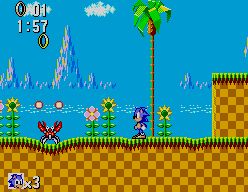 Sega Master System
Sega Master System
First launched in 1985 in Japan as the SG-1000 Mark III, then renamed for its 1987 launch in Europe and America, the Master System was the first Sega console to set out and try to conquer the world. It was an 8-bit console with superior graphics to its main rival, the Nintendo Famicom/NES, but it didn't do as well partly because Nintendo used some rather underhand tactics in the North American market that effectively locked Sega out of the console market there. The SMS did rather better in Europe and elsewhere though, and had some very good games released for it, especially Sega's first party titles such as Phantasy Star and the 8-bit version of Sonic The Hedgehog.
There were about 250 games released for the Master System.
MasterGear is a Master System and Game Gear emulator for S60 3rd Edition and UIQ3 devices from the author of Speccy and ColEm. You can download the demo version or purchase the full version from the MasterGear website.
Sega Game Gear
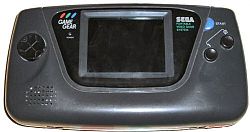 Launched in 1990/1991, the Game Gear was technically speaking a portable Master System with an improved number of on-screen colours and a lower resolution. It was designed to compete with the Nintendo Game Boy, and although it ultimately failed to catch up with its rival the GG did receive Sega's support until 1997. Many Master System games were ported to the Game Gear (you could even buy an adaptor to use SMS cartridges themselves on the GG), but there were also some decent exclusives such as GG Shinobi and Crystal Warriors.
Launched in 1990/1991, the Game Gear was technically speaking a portable Master System with an improved number of on-screen colours and a lower resolution. It was designed to compete with the Nintendo Game Boy, and although it ultimately failed to catch up with its rival the GG did receive Sega's support until 1997. Many Master System games were ported to the Game Gear (you could even buy an adaptor to use SMS cartridges themselves on the GG), but there were also some decent exclusives such as GG Shinobi and Crystal Warriors.
There were about 150 games released for the Game Gear.
As stated above, there's a Game Gear and SMS emulator called MasterGear for S60 3rd Edition and UIQ3 devices. You can download the demo or purchase the full emulator from the MasterGear website.
Arcade Machine Emulators
MAME
MAME (Multiple Arcade Machine Emulator) isn't a games system, but a very widely used piece of software designed to emulate a wide variety of arcade machines (the kind you used to feed coins into).
MAME can run over 3000 different arcade games, although how well it can run a particular game depends on how complex the game is and how powerful the hardware running MAME is. As with all emulators, most of the processing power of the system running MAME doesn't go on running the actual game but on simulating the behaviour of the hardware that originally ran the game, in order to reproduce the game's behaviour exactly as it was in its original form.
EEMame, also known as E2Mame, is a port of MAME for older Symbians including S60 1st and 2nd Edition, UIQ2 (Motorola A925 and A1000), S80 (Nokia 9300 and 9500) and S90 (Nokia 7710), and can be downloaded from the EEMame website. There's a prototype version of EEMame for S60 3rd Edition originally put up by its author for user feedback purposes, but development work on it appears to have stopped.
krisse, for All About Symbian, original article October 2006, last updated May 2008

